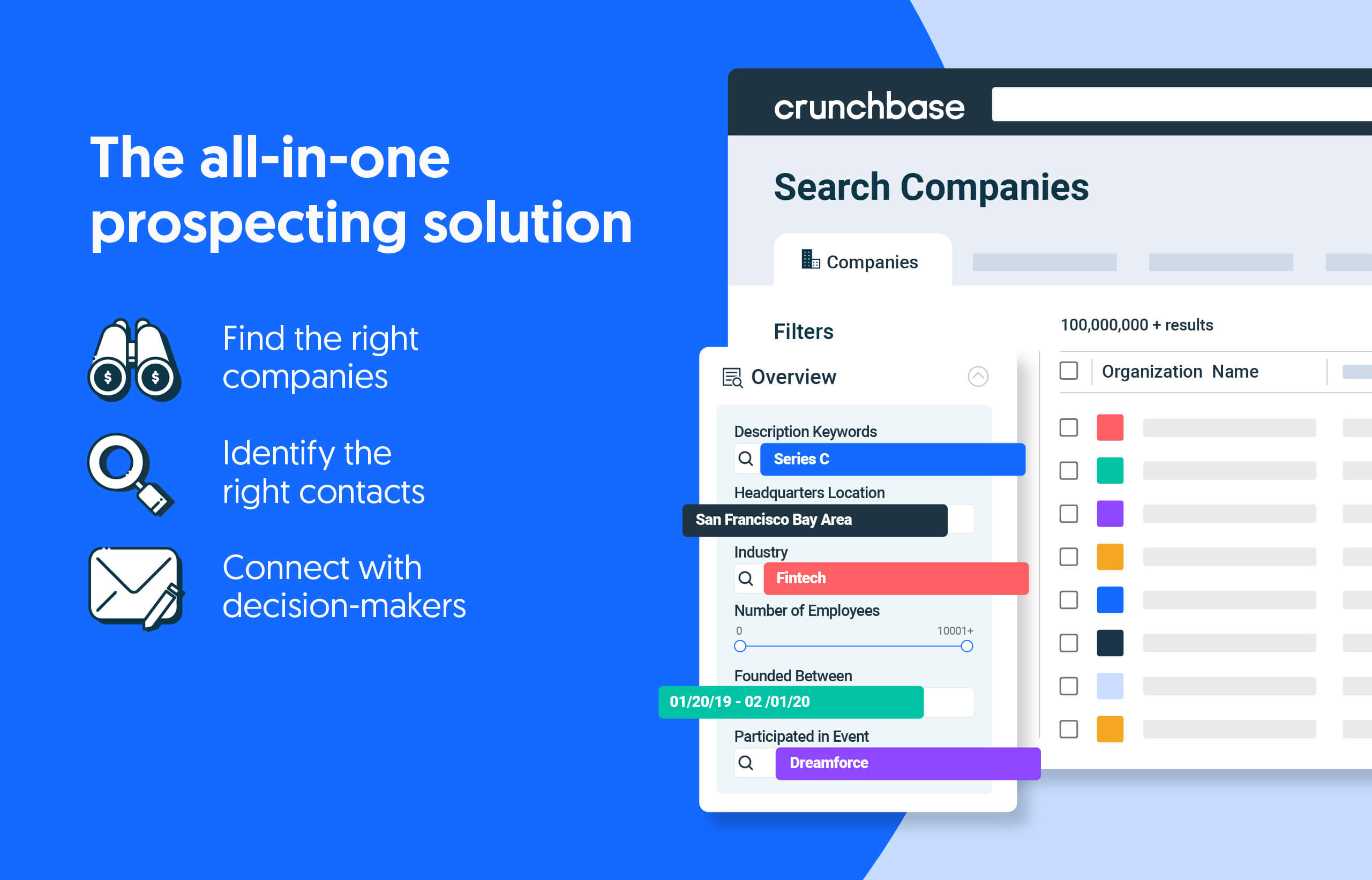These days, one doesn’t have to scroll far to find alarming headlines about the cost of housing.
- The average asking monthly rent for a Manhattan apartment has surged above the $5,000 mark—up 29% year over year.
- For those fleeing to the Sunbelt, the news isn’t much better. In Austin, Texas, rents more than doubled, logging the largest average annual increase in the nation.
- The stats for those looking to buy are also sobering. In Los Angeles, dubbed the nation’s least affordable metro area, less than 9% of homes were affordable to a typical family.
The common theme: Putting a roof over one’s head costs a lot of money. And it keeps getting more expensive.
Search less. Close more.
Grow your revenue with all-in-one prospecting solutions powered by the leader in private-company data.
Housing affordability is an issue that hasn’t been lost on startup founders, a group that tends to cluster in many of those same metros that feature the highest rents and home prices. The result is a proliferation of funded ventures in such areas as 3D-printed homes, construction robots and on-site building process innovation.
Using Crunchbase data, we put together a sampling of a couple dozen U.S. startups with ties to affordable housing that have collectively raised more than $1 billion in roughly the past year. We list them below:
Until you scale it, you can’t afford it
While the above-listed startups represent a broad array of technological expertise and go-to-market strategy, many share a core focus: To be affordable, housing construction must be more scalable.
Per Amit Haller, CEO of Veev, the most heavily funded company on our list, the current housing affordability crisis is basically a derivative of a bigger problem: We still build essentially the same way we built 20 years ago.
”We need to think about mass-production of homes,” Haller said. “Once we have mass-production, affordability is simpler.”
In a more ideal world, Haller envisions, building homes would be more like churning out iPhones. The resultant product would be available at mass scale and of high enough quality to appeal to consumers of all means.
Veev’s proposed solution for bringing this kind of scalability sounds sweepingly ambitious, even by startup standards. The San Francisco-based company is sourcing and developing its own components—including prefab walls, steel framing and a digital home operating system—and putting in place building processes that will enable faster on-the-ground completion.
To that end, Veev has raised over $580 million in known equity funding, including a $400 million Series D in February led by Bond. The company also counts LenX, the VC arm of leading U.S. homebuilder Lennar, among its lead investors.
Another big fundraising recipient is Austin-based ICON, a housing upstart that is applying 3D-printing to the homebuilding process in an effort to produce quick-to-build, low-cost, eco-friendly dwellings. ICON has raised over $450 million to date, and counts Tiger Global Management and Norwest Venture Partners among its lead backers.
Meanwhile, Oakland-based Mighty Buildings has raised just over $100 million to date for its 3D-printed panel system, which it includes in prefab home kits. And Cover, which specializes in building backyard cottages, has pulled in over $70 million, including a $60 million October Series B.
Addressing labor shortages
Companies are scaling up at a time when U.S. housing supply is falling far short of demand. According to a recent estimate, the nation is 3.8 million homes short of meeting housing needs, a shortfall that has contributed to rising rents and homebuying bidding wars.
But unfortunately, it’s not the kind of shortage that’s easy to backfill. That’s because even if one has the core materials for a home—a big if in today’s unpredictable supply chain environment—one still needs a local labor force to build it.
Veev’s Haller considers labor shortages the biggest factor holding back affordable home construction. Startups, he believes, can play a role by developing ways to construct homes that require less on-site labor.
To that end, several startups on our list see robotics playing a role in reducing construction labor requirements. Fremont, California-based Diamond Age, which landed $50 million in a February Series A, is one. The company develops what it describes as a robotics-as-a-service system that brings automation to the construction site. It says its automation platform and robotic tools can offset 55% of the manual labor required to build a conventional home.
In a similar vein, Silicon Valley-based Dusty Robotics brought in a $45 million Series B in May, bringing total funding to over $68 million. The company says its bot can autonomously print a full-scale model onto a construction surface in a fraction of the time it takes a team of people to draw chalk lines.
Veev, for its part, sees labor savings deploying its prefab components and building processes to new housing developments.
The long road to affordability
Now, although many of today’s startups are working on building homes more cheaply, don’t expect dwellings springing up in the next couple years to be particularly inexpensive.
Anytime you try something new in building, the first few structures tend to be expensive to construct, Haller observes. It’s only when you get to larger volumes that economies of scale emerge.
Since recently funded startups are still in nascent stages of scaling, those economies of scale mostly aren’t showing up yet in home prices.
Based on our research, for instance, a Veev home constructed in pricey San Carlos, California, was recently listed at $1.4 million. A two-bedroom unit in Austin built with ICON’s technology apparently sold last year for $450,000. And the estimated cost of building a one-bedroom backyard cottage unit with Cover was over $300,000.
Of course, affordability is relative, depending on one’s income and other living expenses. One oft-cited benchmark, the 30% rule, holds that one should budget about a third of income on housing. While financial advisers don’t think this rule should always be followed, the basic premise that you should have enough money left to live on after paying rent is a sound one.
By most agreed-upon benchmarks, U.S. housing is not affordable to lower wage earners. One recent study found that a full-time worker earning the federal minimum wage of $7.25 per hour cannot rent an affordable two-bedroom apartment anywhere in the country. Households in California, meanwhile, needed a $36 hourly wage to afford a 2-bedroom.
All told, housing affordability is the kind of big problem that startups might love to tackle. However, they won’t solve it single handedly, and certainly not in the near term.
Still, just like in home construction, it never hurts to have more tools at your disposal. And it looks like startups have some pretty technologically sophisticated tools to offer.
Illustration: Dom Guzman

Stay up to date with recent funding rounds, acquisitions, and more with the Crunchbase Daily.




![Illustration of a man sitting on a huge pile o' money. [Dom Guzman]](https://news.crunchbase.com/wp-content/uploads/Giant_Funding-470x352.jpg)




![Illustration of a man sitting on a huge pile o' money. [Dom Guzman]](https://news.crunchbase.com/wp-content/uploads/Giant_Funding-300x168.jpg)


67.1K Followers